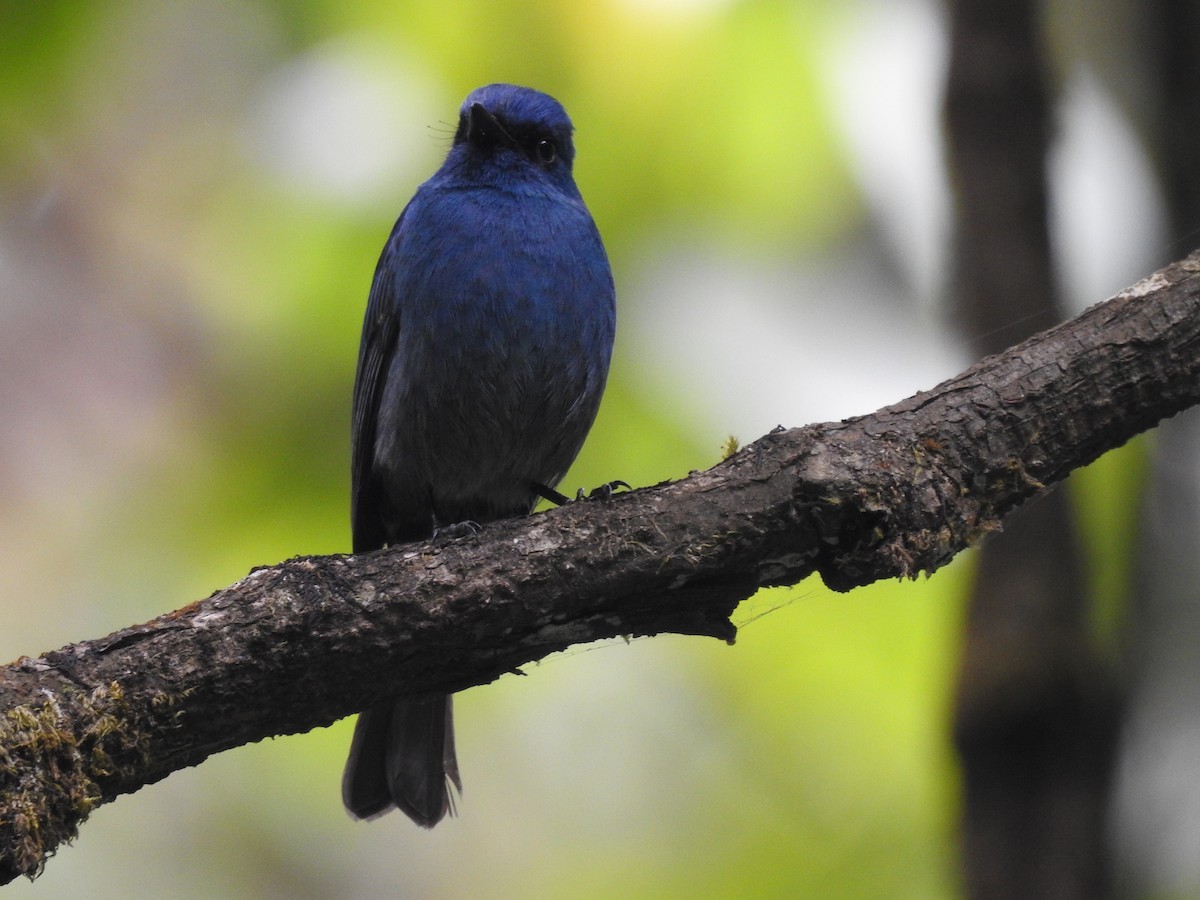Nilgiri Flycatcher
A species of Warbling-flycatchers Scientific name : Eumyias albicaudatus Genus : Warbling-flycatchers
Nilgiri Flycatcher, A species of Warbling-flycatchers
Botanical name: Eumyias albicaudatus
Genus: Warbling-flycatchers
Content
Description General Info
 Photo By Ashwin Viswanathan
Photo By Ashwin Viswanathan Description
The Nilgiri flycatcher (Eumyias albicaudatus) is an Old World flycatcher with a very restricted range in the hills of southern India. It was formerly referred to as the Nilgiri verditer flycatcher because of its similarity to the verditer flycatcher, a winter migrant to the Nilgiris, which, however, has distinct dark lores and a lighter shade of blue. There are two small white patches at the base of the tail. It is found mainly in the higher altitude shola forests of the Western Ghats and the Nilgiris. 
Size
15 cm
Nest Placement
Tree
Feeding Habits
Nilgiri Flycatcher predominantly feeds on small invertebrates and berries, foraging solo or alongside other flycatchers in bushes and lower tree levels. It exhibits an upright perched stance, tail flicks while calling, and may pursue insects aerially from the canopy.
Habitat
The nilgiri Flycatcher is primarily found in evergreen hill forests and dense woodlands, often frequenting areas with thick streamside vegetation. It is also commonly seen in shaded coffee and cardamom plantations, as well as the edges and clearings of these environments, and large gardens within these general habitats.
Dite type
Insectivorous
General Info
Feeding Habits
Bird food type
Behavior
Like most flycatchers, it makes sallies to capture insects and returns to its perch. It forages mainly in the lower storey but can sometimes be found on top of the canopy. The song is a series of rich warbling notes (having a resemblance to the call of the pied bushchat) while the usual call is a soft nasal chipping eep. They perch upright and produce the chipping note while flicking the tail up and down. The breeding season is from March to June but peak egg-laying is in April. The nest is built in a cavity in an earth bank or a tree hole. They also use the eaves of houses and wood-work of bridges. The nest is a cup with mosses and lichens on the outside with some feathers and is not very well lined on the inside. The usual clutch is two to three eggs. The eggs are creamy brown with a dense mottling close along the broadest part of the egg. 
Distribution Area
This species is found in the higher hills (mostly above 1200 m) of the Nilgiris, Palnis, Anamalai ranges, the Brahmagiris, Bababudan and Biligirrangan hills. 

 Photo By Ashwin Viswanathan
Photo By Ashwin Viswanathan Scientific Classification
Phylum
Chordates Class
Birds Order
Perching birds Family
Old world flycatchers Genus
Warbling-flycatchers Species
Nilgiri Flycatcher